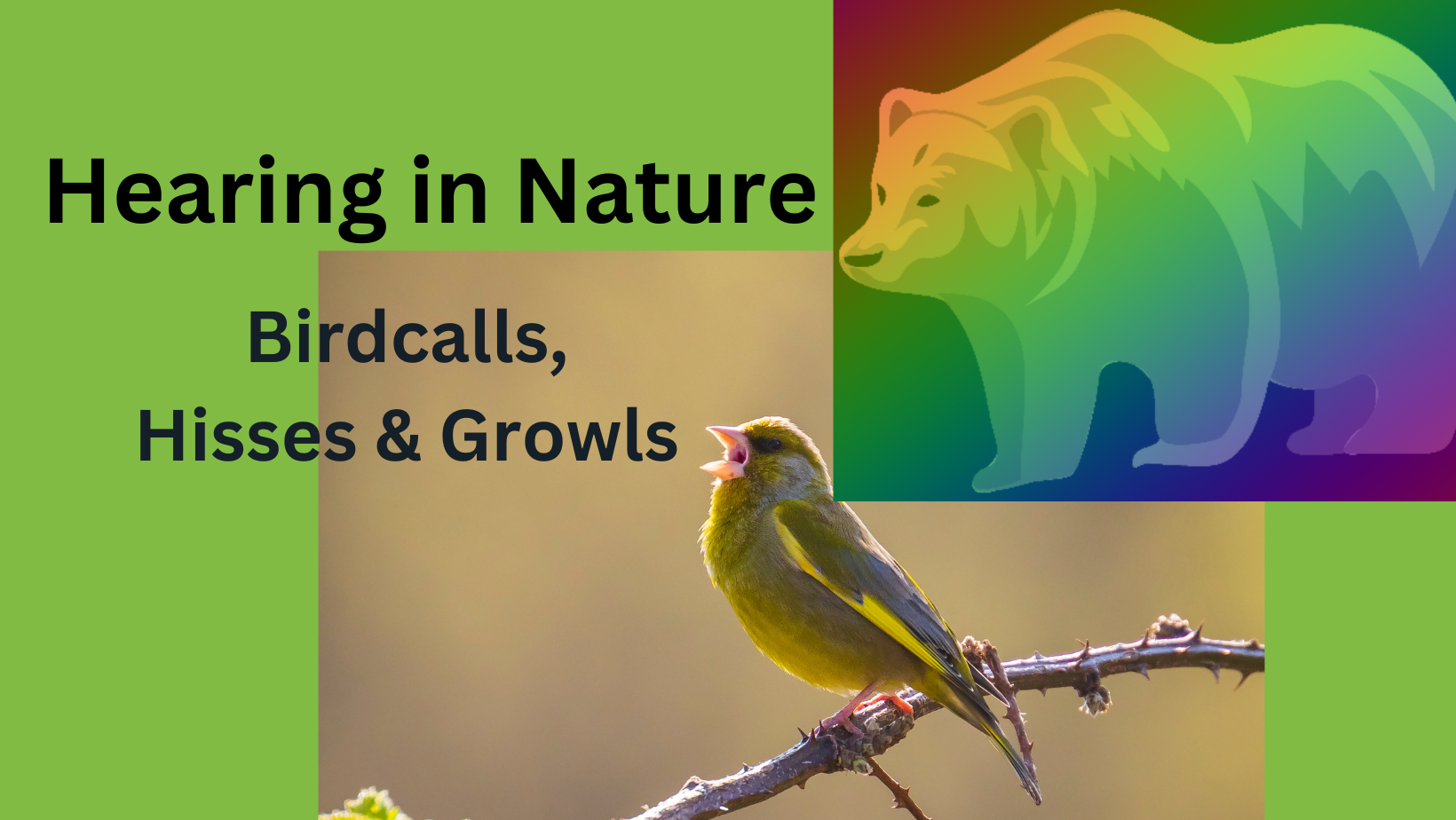“Honey, what’s that sound?”
“A bird.”
“What kind?”
“You’ve got to be kidding. I dunno, one with feathers.”
On the hiking trails, spring wildflowers are popping up, and I’m grateful for these silent beauties of nature.
Hearing sounds out of doors has always been a challenge for me. Nature has no walls to contain sound and no light switch to illuminate faces and other objects. Anything rustling in the bushes is not likely to respond to pardon me in my language, so hearing and identifying sounds is a hit and miss affair.
I love birds; they’re pretty and they can fly. Usually I just watch them because prior to my first hearing aid, crows and seagulls were the only birds I could hear well—especially if I saw them first. Now that I am bimodal with a hearing aid/cochlear implant combo, I hear woodpeckers, jays, robins, and the call of the beautiful northern flicker, probably my favorite bird. If all else is quiet, I can hear owls and the chittering of the tiniest birds. I may not be able to tell you what tree they are in, or even the direction the bird-babbling is coming from, but those are minor details compared to the thrill of hearing them.
According to birding organizations, the average frequency of songbirds is about 4,000 Hz, approximately the same pitch as the highest note of a piano—both of which are beyond the range of most severe hearing losses. Before implantation, birds would have to be very close to me, and warble at 80dB for my left ear to pick up the sound and at a potentially fatal—to the bird—110dB for the right ear to hear. Many birds and most insects produce sound at an even higher frequency: I don’t hear cicada conventions unless the universe is otherwise silent.
But bird identification shares the rules for speechreading people: familiarize yourself with the bird sounds, recognize their shapes against the sky, and use technology. Many years ago, while canoeing with my husband and son, I paddled deaf because of my fear of drowning my hearing aids. We came up silently and close to two loons who were circling and talking to each other, oblivious to us. Watching them, I ‘read’ their loon-lips, opening and closing, their throats moving and, in my head, I heard the cry of these loons.
Sophisticated smartphone apps provide not only bird pictures and shapes but also their birdcalls, helpful for a person who can’t hear the actual sound in nature. A birding friend of mine uses a mike system when hiking with other birders. The group leader, the one who knows everything, wears the transmitter and my friend can hear the leader’s bird-chat from wherever she is standing.
A friend suggested I learn to recognize birds by their nest shapes and the smell of their bird-poop…but that goes beyond the limits of my interest.
Not being able to hear other wild creatures—grizzly bears and snakes and such – can be dangerous. Depending on where you’re walking, you’re just as likely to be killed by a snake as a bear – and I’m sorry I ever looked that information up. I’m quite sure, however, that I would hear a snake’s rattley-hiss these days, but I’m not so sure about hearing a bear snuffling about in the bushes. I need to look up what that sounds like – and avoid hiking in grizzly country.
Nature is so beautiful that any risks are worth it – especially with the help of today’s fabulous technology.
Adapted from “The Way I Hear It: A Life with Hearing Loss”, 2015, by Gael Hannan.







Great post! Thanks.